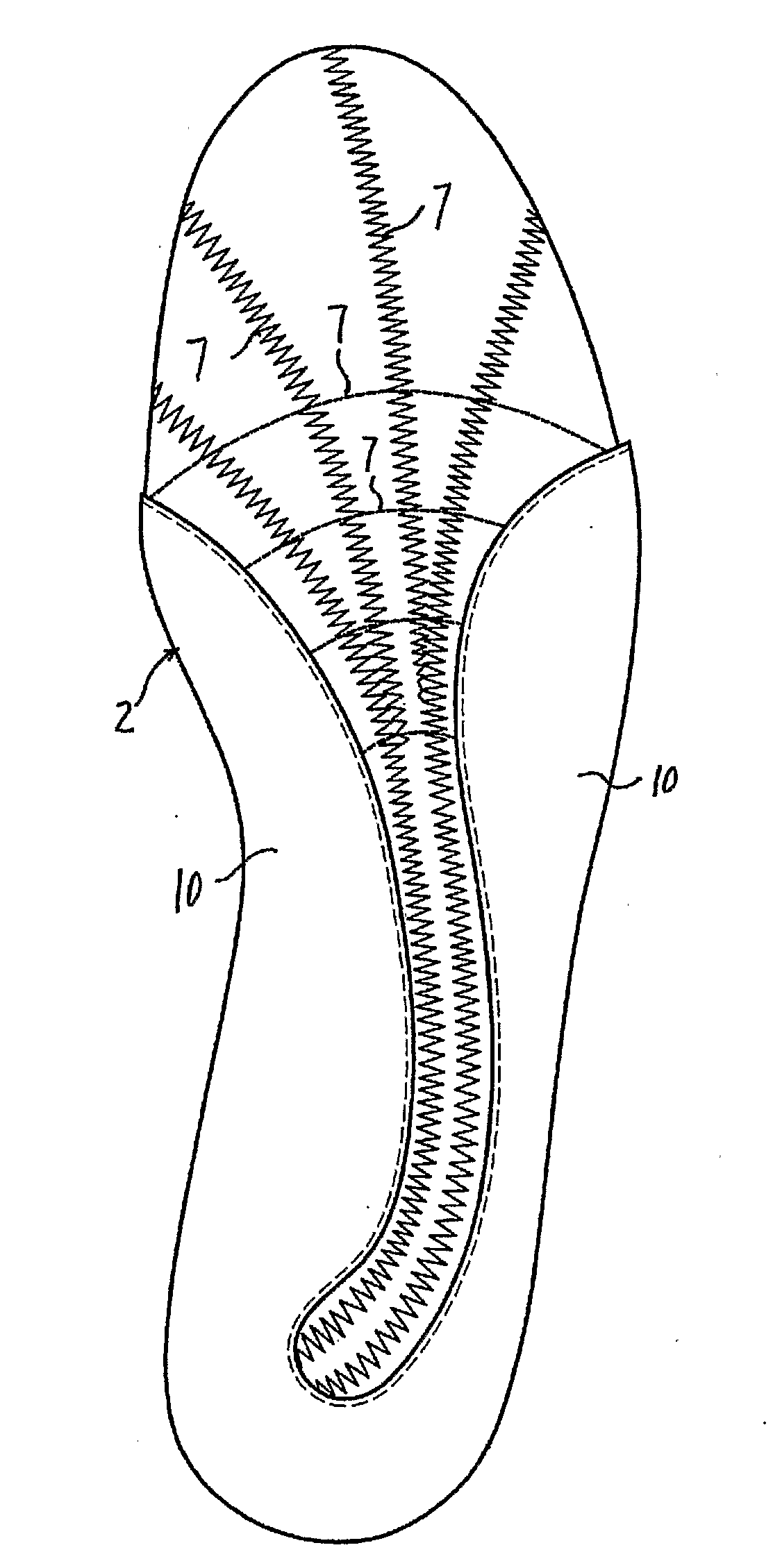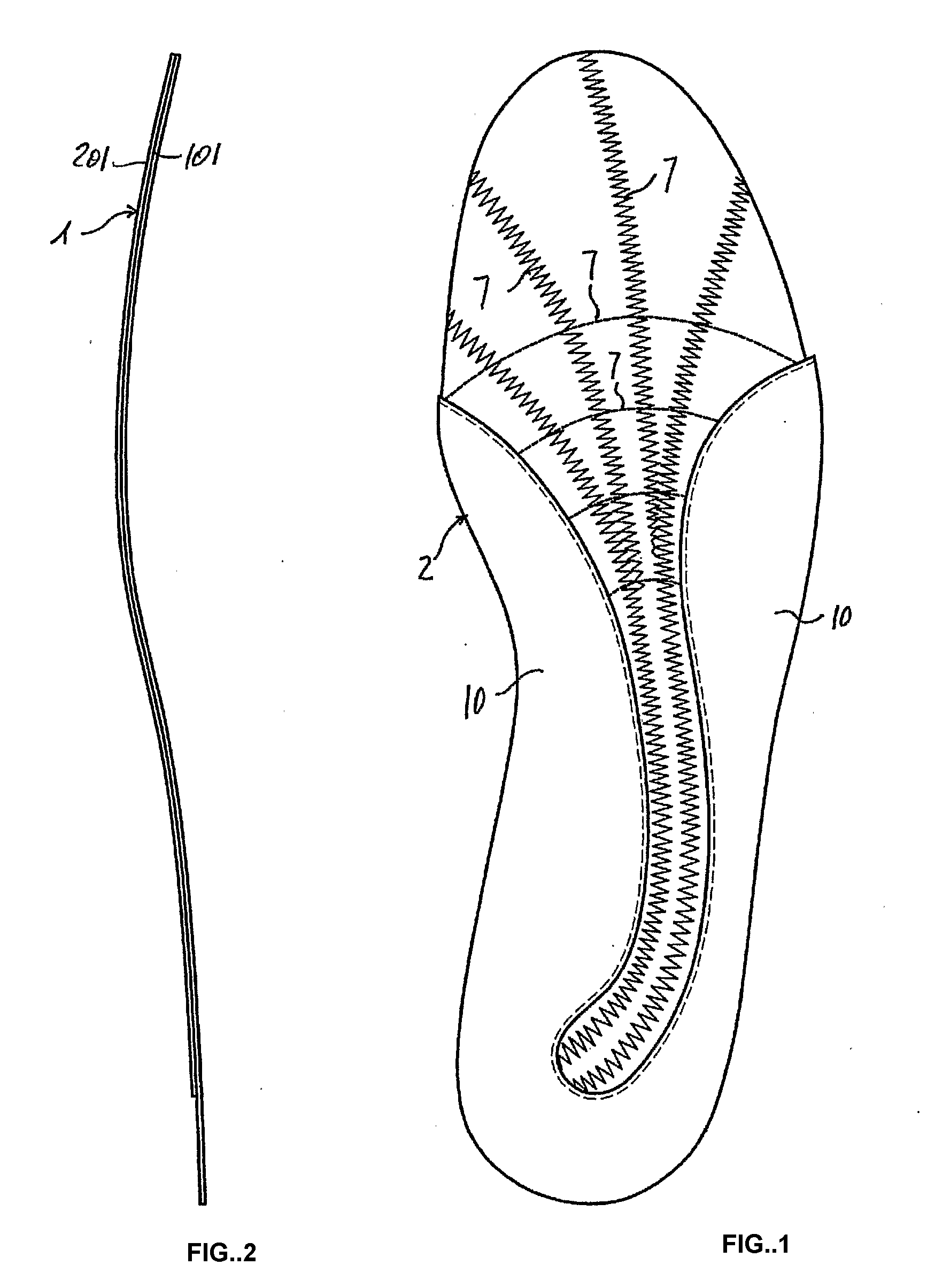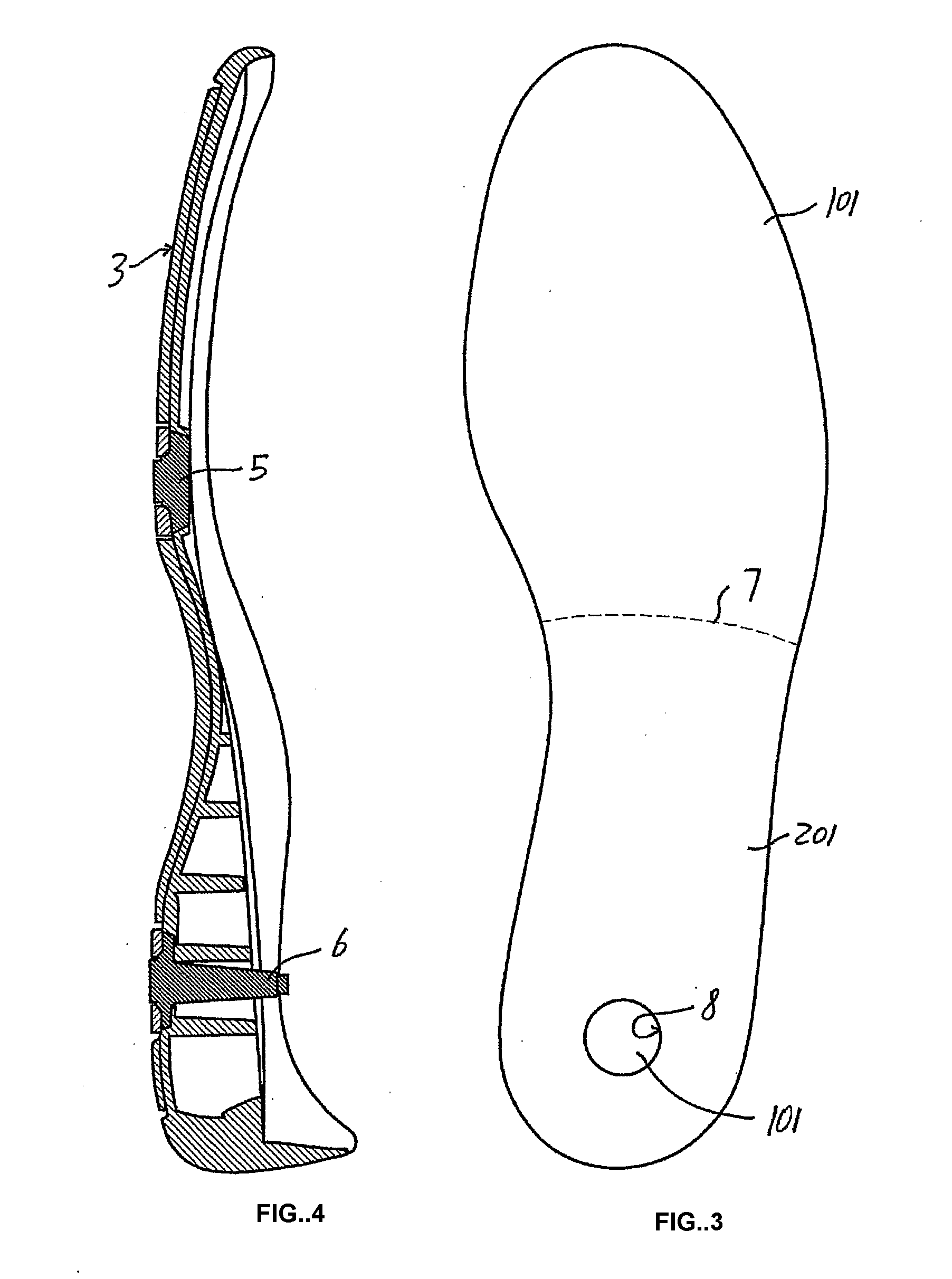Antistatic Footwear
a technology of antistatic footwear and anti-static shock, which is applied in the direction of uppers, bootlegs, apparel, etc., can solve the problems of user discomfort, high manufacturing cost, health danger, etc., and achieve the effect of less expensive, and high conductivity of metal materials
- Summary
- Abstract
- Description
- Claims
- Application Information
AI Technical Summary
Benefits of technology
Problems solved by technology
Method used
Image
Examples
Embodiment Construction
[0046]It is well known that footwear typically includes a sole, an upper, a mounting insole overlapping the sole side internal to the upper, and a cleaning insole facing the foot intended to be housed inside the footwear. Generally, the term “insole” is used to define the above described two layers, the mounting insole that directly overlaps the inner side of the sole, and the cleaning insole that overlaps the mounting insole. The cleaning insole may be a layer extending through the entire area of the footwear defined by the upper, or may be an arch support, or a sockliner.
[0047]Cleaning insoles may be simply laid on the sole and on the mounting insole, or may be coupled to the sole and to the mounting insole.
[0048]Typically, the cleaning insole is simply laid on the mounting insole, while the mounting insole may be coupled to the sole, for example by gluing or by chemical / physical adhesion to the sole side internal to the upper, or may be sewn thereto.
[0049]FIGS. 1 and 2 illustrate...
PUM
 Login to View More
Login to View More Abstract
Description
Claims
Application Information
 Login to View More
Login to View More - R&D
- Intellectual Property
- Life Sciences
- Materials
- Tech Scout
- Unparalleled Data Quality
- Higher Quality Content
- 60% Fewer Hallucinations
Browse by: Latest US Patents, China's latest patents, Technical Efficacy Thesaurus, Application Domain, Technology Topic, Popular Technical Reports.
© 2025 PatSnap. All rights reserved.Legal|Privacy policy|Modern Slavery Act Transparency Statement|Sitemap|About US| Contact US: help@patsnap.com



